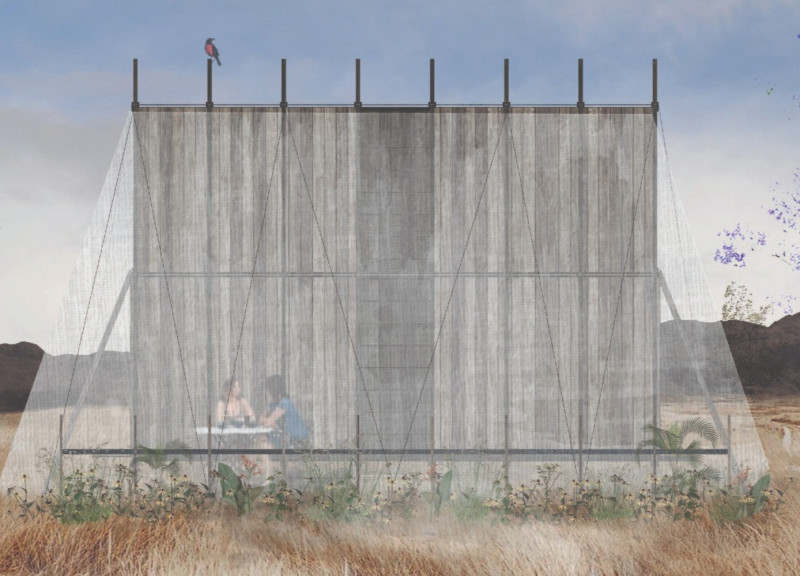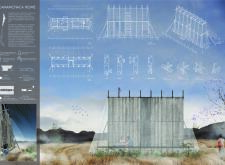5 key facts about this project
The Camanchaca Home is situated in the northern Chilean coastal region, designed to provide both functionality and connection to its environment. Measuring 15 square meters, the structure centers around a unique artifact that combines furniture with an interactive element. The design emphasizes adaptability, allowing residents to change their space according to their needs while addressing the local climate.
Design Concept
The home features a simple and practical design that prioritizes user engagement. Its central artifact includes a wrapping cloth, which can be unwrapped to offer different levels of privacy throughout the day. This approach not only respects the needs of the inhabitants but also highlights the importance of flexibility in living spaces.
Materiality
In terms of materials, the home utilizes wood in various forms, which adds both strength and visual warmth to the interior. The wrapping cloth plays a crucial role in the design as it captures humidity from the local coastal mist known as "Camanchaca." This practical element enhances the functionality of the home and supports sustainability by assisting in water collection.
Spatial Organization
The layout enhances daily life by clearly defining areas for eating, working, resting, and grooming. Each space is organized to allow for easy movement throughout the home. Movable elements are included to adapt to different activities, responding to the changing requirements of the residents while maintaining a cohesive design.
Environmental Integration
The Camanchaca Home stands out for its thoughtful response to the local environment. By collecting moisture from the coastal fog, the design addresses the issue of water scarcity in the region. This interaction with the climate results in a home that is both practical and responsive to its surroundings.
The wrapping cloth not only serves as a privacy feature but also plays an essential role in managing humidity and collecting water, adding depth to the home’s functionality.


















































